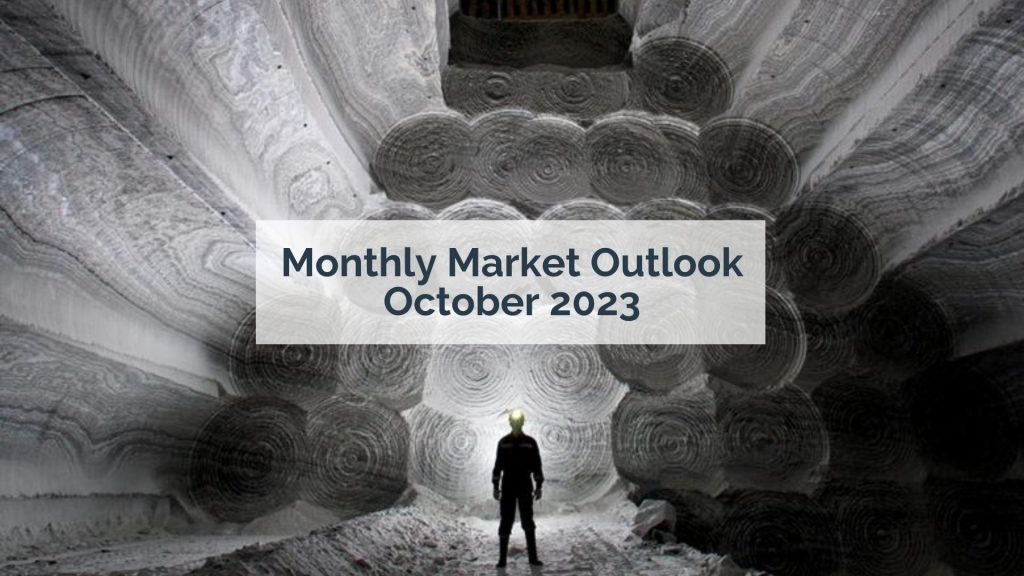
2022 November Outlook for G7 Currencies
2022 November Outlook for G7 Currencies
Dollar, Euro and Pound
Dollar index extended its decline
The value of the dollar index has been volatile in recent days, falling below 106 in November, as investors assess a range of economic factors. One factor contributing to the fluctuation in the dollar index is the anticipation of easing of its pace of monetary policy tightening by the Fed to assess its impact on inflation and balance inflation with economic growth. Markets are also anticipating a 50bps rate hike in December, a smaller extent than the 75bps delivered in November’s FOMC meeting. Inflationary pressures and expectations for the terminal fed funds rate, which is currently around 5%, may be influenced by consumer price index data due next week. The dollar has also been impacted by expectations that other central banks, such as the European Central Bank and the Bank of England, may tighten monetary policy faster than previously thought, while China has relaxed some Covid restrictions, leading to increased optimism about the global economic outlook.
Sterling held its ground despite recession fears
The value of the British pound has been hovering around $1.22 recently, close to a six-month high of $1.23 reached earlier this month. This growth has been supported by increased confidence that the UK is aligning its spending and borrowing plans with economic reality, as well as a decline in the value of the US dollar due to slowed policy tightening by the Federal Reserve and concerns about the US economy. However, there are still concerns about the possibility of a domestic recession in the UK, with Bank of England Governor Andrew Bailey warning that tightening expectations may be overdone as the country faces a two-year recession.
Euro rallied higher, buoyed by a hawkish ECB and narrowing interest rates differentials
The Euro remained strong against the dollar, trading at around $1.04, near its highest level in nearly five months. The Euro had previously benefited from positive economic data, including PMI figures showing a slight improvement in Euro Zone business activity in November. However, the region’s economic outlook remains uncertain, with some concerns of a potential recession on the horizon. According to the minutes from the ECB’s October policy meeting, officials agreed to continue normalizing and tightening monetary policy to address high inflation, even if a shallow recession were to occur. However, the central bank suggested that it may consider pausing its ongoing interest rate hikes in the event of a prolonged and severe recession, which would likely have a greater impact on inflation. On the other hand, the Fed’s minutes indicated that it plans to slow the pace of rate increases in the near future. Meanwhile, the dollar weakened on the back of the Federal Reserve’s recent indication that it will slow the pace of its rate hikes. Market expectations are currently centred on the ECB delivering a smaller 50 basis point interest rate increase at its next meeting, despite mixed signals from ECB policymakers in recent days.
EURUSD: Bullish above 1.0100
| S1 | S2 | R1 | R2 |
| 1.0100 | 0.9920 | 1.0600 |
– |

GBPUSD: Bullish above 1.1620
| S1 | S2 | R1 | R2 |
| 1.1620 | 1.1150 | 1.2450 |
– |

Commodity Currencies
Improved market risk sentiment and a weaker greenback boosted Aussie and Kiwi’s rally
The New Zealand dollar appreciated to around $0.64, near its highest levels in four months, while the Australian dollar appreciated to around $0.68, near its highest levels in three months, as a improving risk sentiment weighed on the US dollar and lifted risk-sensitive currencies. Factors contributing to this improvement in risk sentiment include China’s relaxation of Covid restrictions and a narrowing of Australia’s trade surplus in October. However, concerns about a potential global recession and uncertainty about monetary policy tightening by the US Federal Reserve have kept sentiment in check. In terms of domestic economic news, the Reserve Bank of New Zealand delivered a larger-than-usual 75 basis point interest rate hike at its November meeting and projected rates to peak at 5.5% in September 2023, higher than previous forecasts. The Reserve Bank of Australia raised its policy rate by 25 basis points to 3.1% at its December meeting, the eighth consecutive month of rate increases, and indicated that it expects to tighten further to address persistent inflation.
Gold prices climbed, buoyed by weaker US inflation data
Gold prices traded above $1,790 per ounce and reached session highs on Friday as the dollar weakened following the release of weaker-than-expected producer price index (PPI) data in the US, which showed a decrease in producer prices. The next major influence on gold prices will be the US consumer price index (CPI) report on Tuesday, as well as monetary policy decisions by the Federal Reserve, the European Central Bank, and the Bank of England. While these central banks are expected to deliver smaller interest rate hikes, investors will be paying attention to terminal rates and any indications of whether policymakers are preparing to pause or continue tightening monetary policy. Gold is highly sensitive to changes in interest rates, as higher rates increase the opportunity cost of holding non-yielding gold and decrease its attractiveness, and vice versa. In this case, the weaker inflation data and potential for a pause or slowdown in monetary policy tightening has led to a rally in gold prices.
Oil prices struggled for upside
There are several factors that have contributed to the decline in oil prices. Brent crude oil prices have been stable around the $76 per barrel level, near levels not seen since December 2021. One factor is weak global demand for oil, as economic activity has been slowed by tighter financial conditions across much of the developed world. This has reduced the need for fuel and put downward pressure on oil prices. Additionally, the relaxation of Covid restrictions in China, the world’s largest crude oil importer, has led to increased optimism about the reopening of the Chinese economy and higher demand for oil. However, this optimism has been offset by concerns about a potential global recession and declining demand among advanced economies. On the supply side, the shutdown of the Keystone pipeline and the potential for reduced production from Russia due to a Western price cap on Russian crude have added to uncertainty about supply. These factors have all contributed to the recent decline in oil prices, with WTI crude oil prices falling to a one-year low of roughly $71 per barrel before rebounding to $72 per barrel.
AUDUSD: Bullish above 0.6520
| S1 | S2 | R1 | R2 |
| 0.6520 | 0.6300 | 0.6880 | – |

NZDUSD: Bullish above 0.6060
| S1 | S2 | R1 | R2 |
| 0.6060 | 0.5960 | 0.6450 | – |

USDCAD: Bearish below 1.3550
| S1 | S2 | R1 | R2 |
| 1.3200 | – | 1.3550 | 1.3780 |




